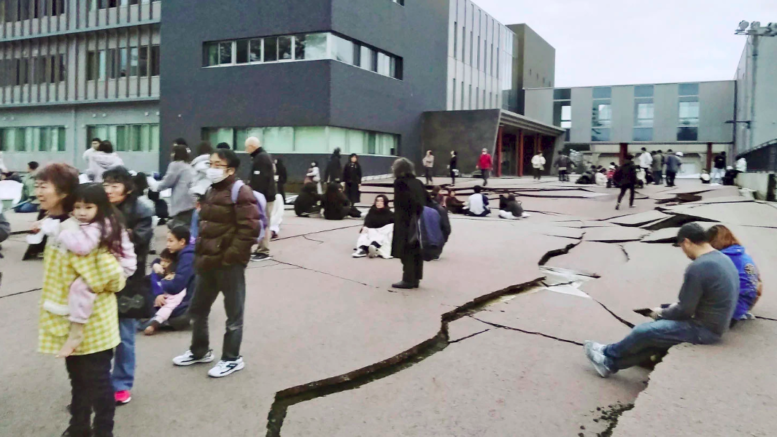Japan experienced a series of powerful earthquakes on New Year’s Day, resulting in significant casualties, demolished buildings, and widespread displacement. The Ishikawa prefecture bore the brunt of the devastation, with at least 48 reported fatalities and numerous survivors requiring medical attention across the region.
Emergency rooms in hospitals across Ishikawa were inundated with survivors, and rescue operations were underway to extricate individuals trapped in the wreckage of homes and buildings. The Japanese public broadcaster NHK conveyed the severity of the situation with a stark headline, highlighting collapsed homes and unconscious individuals.
Complicating the rescue efforts was the forecast of potential snowfall in the region, coupled with extensive damage to roads, requiring alternative means like boats for the delivery of manpower and supplies. Firefighters were simultaneously contending with blazes that consumed approximately 50 buildings in Wajima city.
The quakes, with one registering a magnitude of 7.6, struck off the Ishikawa coast, triggering tsunami warnings in Ishikawa, Niigata, and Toyama coastal prefectures. Although the warnings were later lifted, the earthquakes caused notable disruptions, including power outages, water shortages, and cellphone service interruptions in large sections of the affected area.
Prime Minister Fumio Kishida assumed a hands-on approach, pledging personal leadership in the disaster response. The White House expressed solidarity, assuring Japan of assistance if needed. The death toll included victims from building collapses, and the search-and-rescue teams faced challenges due to damaged roads.
The urgency of the situation was emphasized by Prime Minister Kishida, urging the utilization of all available resources, including the Self-Defense Force, to expedite recovery efforts. The earthquakes were felt as far as Tokyo, underscoring their intensity. Videos circulated on social media depicted the impact on structures, with collapsed roofs, falling objects, and shaken train stations.
In Wajima, a lacquerware company and numerous homes were flattened, trapping residents under debris. Landslides, cracked roads, and collapsed homes were reported in Nanao City, while Suzu witnessed a two-story house collapse. Despite the widespread destruction, officials assured that none of the nuclear reactors in the affected region sustained damage.
The repercussions extended to transportation, with suspended train services and the closure of the airport serving the Noto Peninsula cities. As Japan grapples with the aftermath of this calamity, the focus remains on rescue operations, medical care for survivors, and the restoration of essential services.

